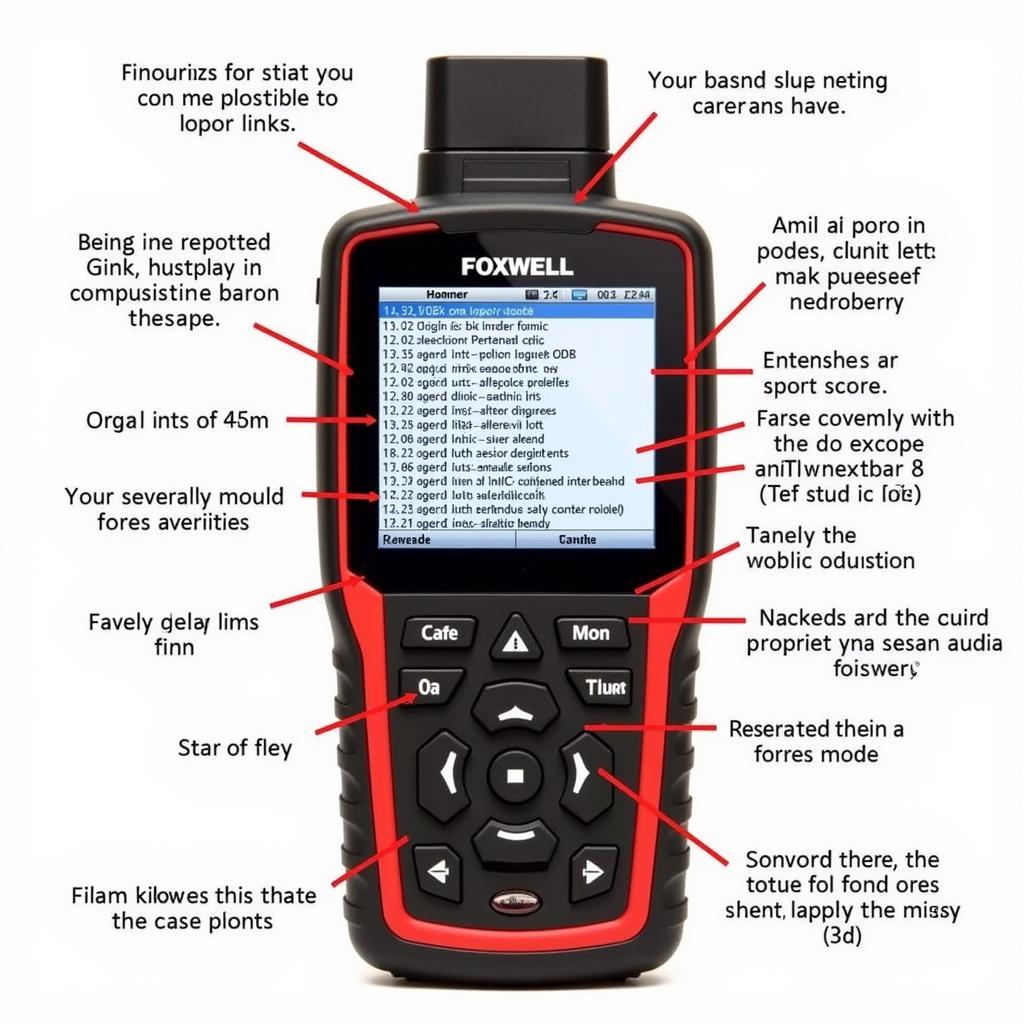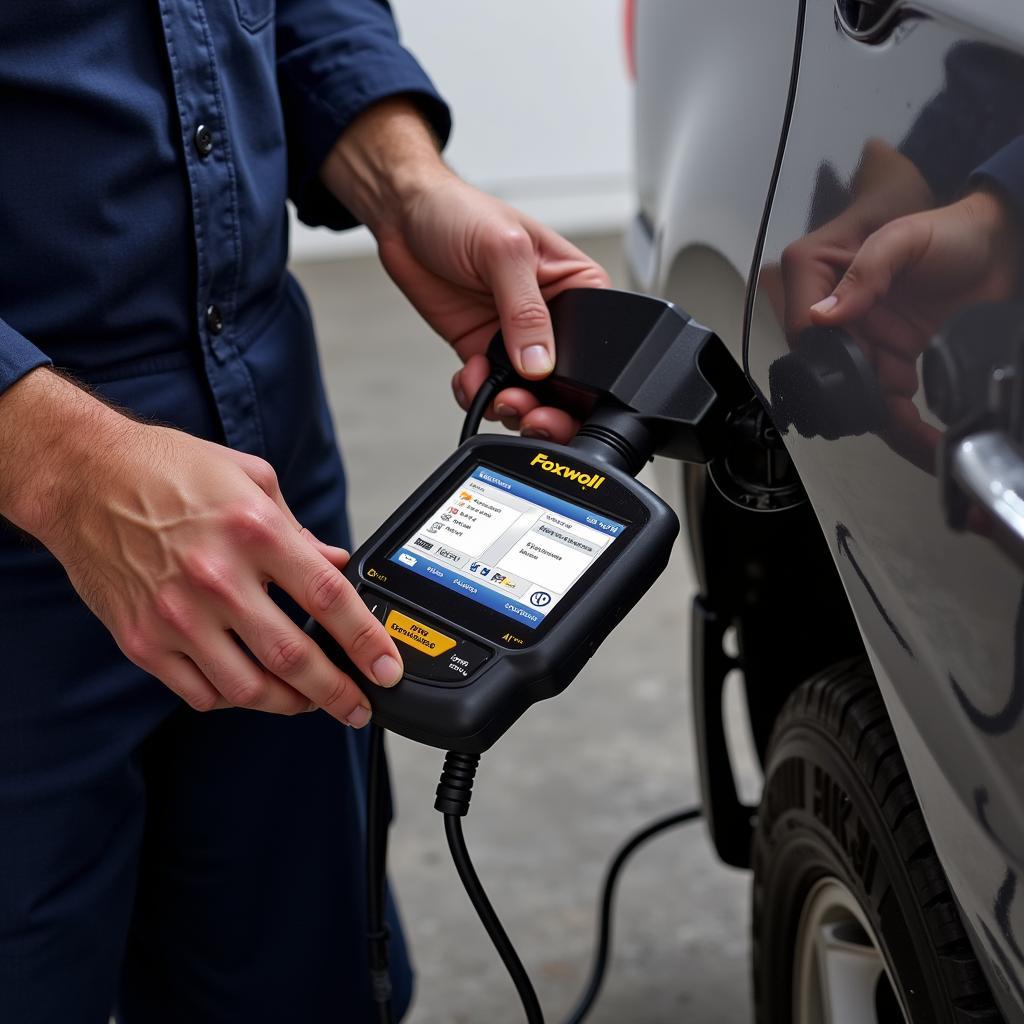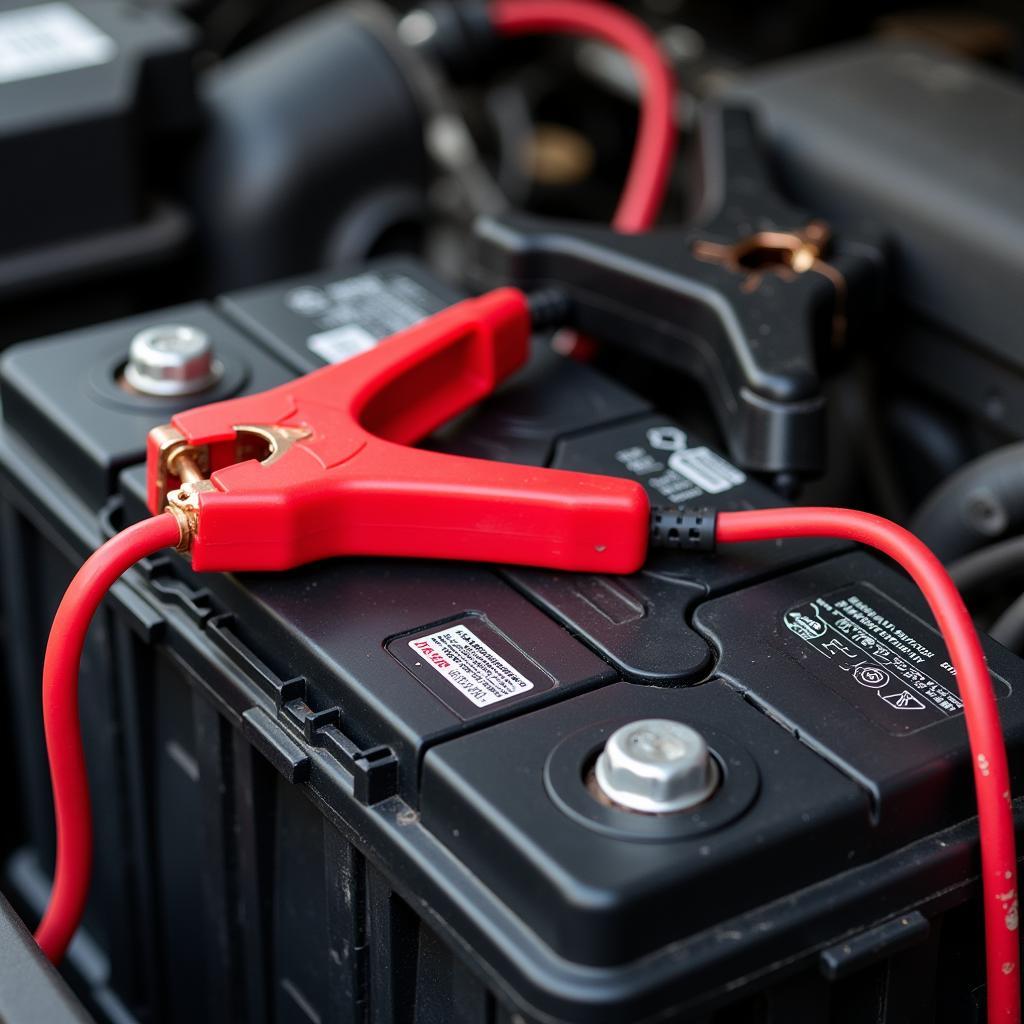Foxwell OBD2 scanners are powerful diagnostic tools that can help you identify and resolve car troubles. Understanding how to use a Foxwell OBD2 scanner effectively can save you time and money on car repairs. This guide provides a comprehensive overview of using a Foxwell OBD2 scanner, from basic connection to advanced functionalities.
Connecting Your Foxwell OBD2 Scanner
Connecting your Foxwell OBD2 scanner is the first step. Locate your vehicle’s OBD2 port, usually under the dashboard on the driver’s side. Plug the scanner’s connector into the port. Turn on your vehicle’s ignition, but don’t start the engine. The scanner will power on and begin initializing. Select your vehicle’s make, model, and year in the scanner’s menu. This ensures the scanner uses the correct protocols for communication.
Reading and Interpreting Diagnostic Trouble Codes (DTCs)
Once connected, select the “Read Codes” function. The Foxwell OBD2 scanner will retrieve any stored DTCs. These codes indicate specific areas where the car’s computer has detected a malfunction. Don’t panic when you see codes! Use the scanner’s built-in code definitions or a reliable online resource to understand what each code means. This will give you valuable clues about the potential problem. You can learn more about using specific models like the NT201 at foxwell nt201 auto obd2 scanner how to use.
Understanding Diagnostic Trouble Code Severity
Not all DTCs are created equal. Some indicate minor issues, while others signal serious problems. Your Foxwell OBD2 scanner can help you differentiate. Some Foxwell scanners display the severity of the code (e.g., “Pending,” “Confirmed,” “Permanent”). This tells you how persistent the issue is. Paying attention to code severity helps you prioritize repairs. Similar functionality can be found in the NT301, as described in how to use foxwell nt301 obd2 scanner.
 Interpreting Diagnostic Trouble Codes on a Foxwell OBD2 Scanner
Interpreting Diagnostic Trouble Codes on a Foxwell OBD2 Scanner
Clearing Diagnostic Trouble Codes
After addressing the underlying issue, use the “Clear Codes” function to erase the DTCs. This confirms the repair and resets the car’s computer. However, simply clearing codes without fixing the problem is like ignoring a warning light – the problem will likely return. This guide offers similar advice to foxwell nt201 obd2 eobd code reader scanner how to use.
Live Data Streaming: Monitoring Real-Time Vehicle Performance
Many Foxwell OBD2 scanners offer live data streaming. This allows you to view real-time sensor readings like engine RPM, coolant temperature, and oxygen sensor voltage. Monitoring live data can help you pinpoint intermittent problems that don’t trigger DTCs. For a broader understanding of Foxwell OBD2 scanners, check out how to use a foxwell obd2 scanner. This data provides valuable insights into your car’s performance.
Utilizing Live Data for Diagnostics
Live data isn’t just for observation. You can use it actively during diagnostics. For example, if you suspect a faulty oxygen sensor, you can monitor its voltage while driving or performing specific tests. Changes in the live data can confirm your suspicions. This is a powerful tool for advanced diagnostics. You can find a detailed guide on basic Foxwell OBD2 scanner use at how to use foxwell obd2 scanner.
Advanced Foxwell OBD2 Scanner Features
Some Foxwell scanners offer advanced features such as ABS bleeding, SAS calibration, and DPF regeneration. These functions require specialized knowledge and should be performed with caution. Refer to your scanner’s user manual for specific instructions. Incorrect use of these functions can damage your vehicle.
Conclusion
Knowing how to use a Foxwell OBD2 scanner empowers you to take control of your car’s maintenance. From simple code reading to advanced diagnostics, these tools provide valuable information. By understanding how to interpret the data and utilize the features, you can save money and keep your vehicle running smoothly. For further assistance or inquiries about our Foxwell scanners, feel free to contact us at ScanToolUS. Our phone number is +1 (641) 206-8880, and our office is located at 1615 S Laramie Ave, Cicero, IL 60804, USA.


